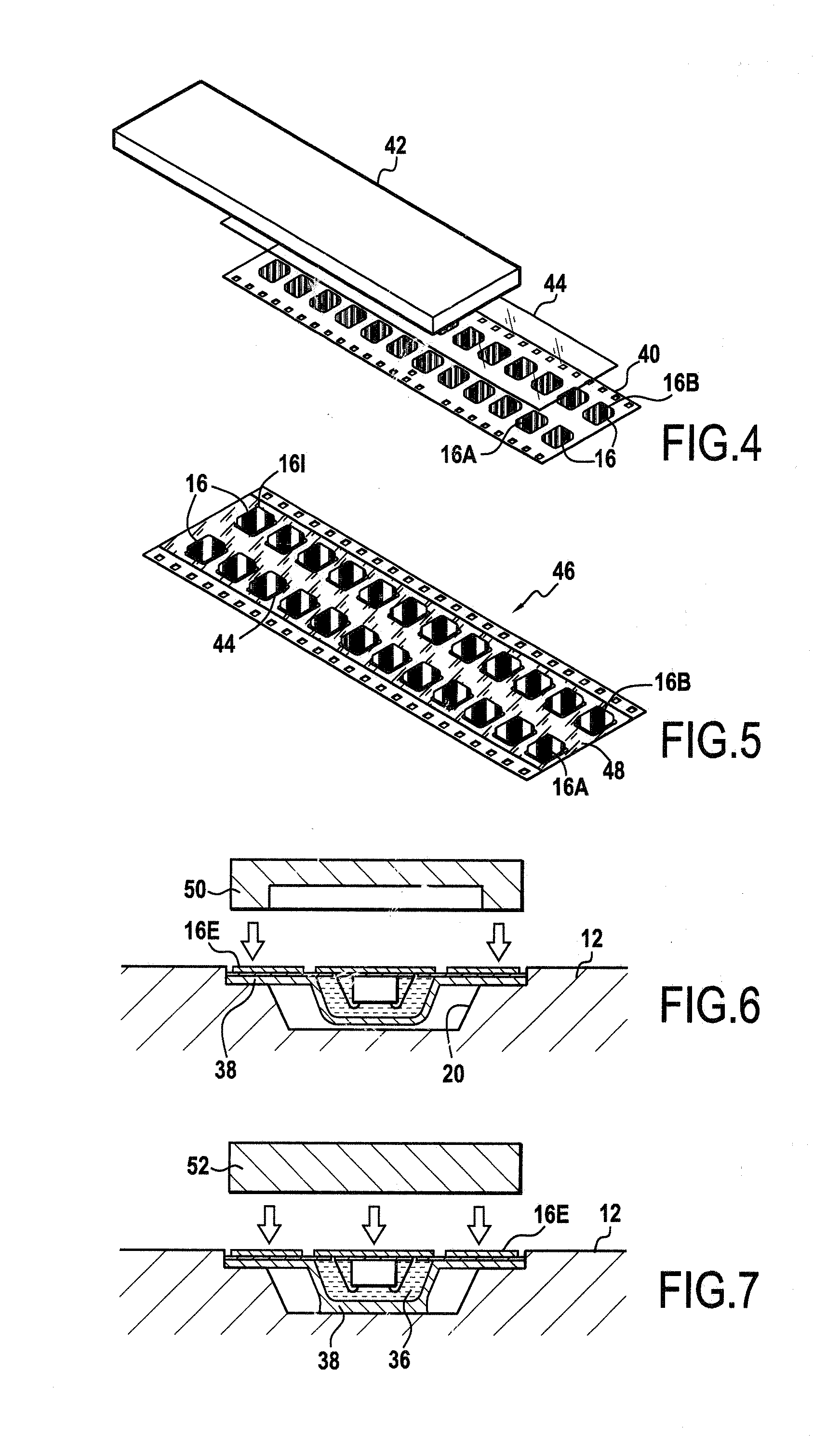Method of fabricating a microcircuit device
a micro-circuit and electronic device technology, applied in the direction of semiconductor devices, instruments, computing, etc., can solve the problems of inability to withstand inability to carry the micro-circuit carried by the module, and inability to adapt to significant bending of the module, etc., to achieve the effect of improving the ability to withstand card strength tests, simple implementation, and reliable card
- Summary
- Abstract
- Description
- Claims
- Application Information
AI Technical Summary
Benefits of technology
Problems solved by technology
Method used
Image
Examples
Embodiment Construction
[0028]FIG. 1 shows a microcircuit device of the invention. This device is given overall reference 10.
[0029]In the example described, the microcircuit device 10 is a smart card. In a variant, the device 10 could be a page of a passport such as the cover of the passport, or indeed it could be an adhesive label or “sticker”.
[0030]As shown in FIG. 1, the device 10 comprises a body 12 that is generally card-shaped, defining first and second opposite faces 12A and 12B.
[0031]In this embodiment, the body 12 defines the outside dimensions of the card 10. In this example, and preferably, the dimensions of the card 10 are defined by the ID-1 format of the ISO 7816 standard, which is the format conventionally used for bank cards, having dimensions of 85.6 millimeters (mm) by 53.98 mm and thickness that is substantially equal to eight hundred micrometers. Naturally, other card formats could also be used.
[0032]The card body 12 is preferably made of a fibrous material, e.g. based on natural and / or...
PUM
| Property | Measurement | Unit |
|---|---|---|
| thickness | aaaaa | aaaaa |
| thickness | aaaaa | aaaaa |
| thickness | aaaaa | aaaaa |
Abstract
Description
Claims
Application Information
 Login to View More
Login to View More - R&D
- Intellectual Property
- Life Sciences
- Materials
- Tech Scout
- Unparalleled Data Quality
- Higher Quality Content
- 60% Fewer Hallucinations
Browse by: Latest US Patents, China's latest patents, Technical Efficacy Thesaurus, Application Domain, Technology Topic, Popular Technical Reports.
© 2025 PatSnap. All rights reserved.Legal|Privacy policy|Modern Slavery Act Transparency Statement|Sitemap|About US| Contact US: help@patsnap.com



